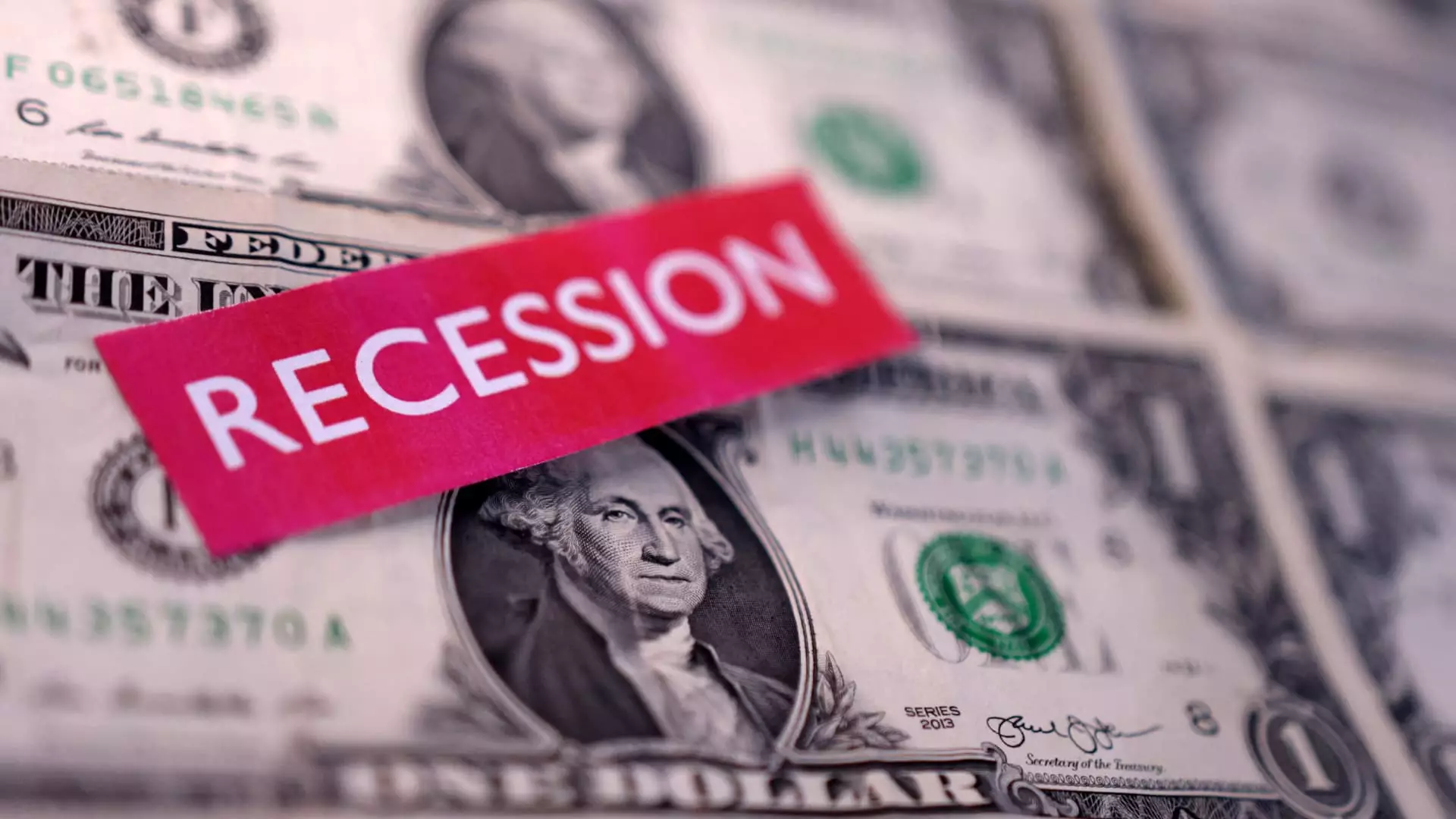Recent assessments from Deutsche Bank echo a sentiment that many in the financial landscape might dread to confront: the likelihood of a recession in the U.S. economy stands at a staggering 50%. The insights gleaned from a survey featuring around 400 professional voices provide an unnerving glimpse into the economic psyche, revealing an even heavier probability of a 43% downturn within the next year. This is not merely statistical data; it’s a reflection of growing anxiety permeating throughout business sectors and household budgets alike. Despite low unemployment rates and some indicators signaling an expansion—albeit slowing—there lies an undercurrent of worry among both consumers and business leaders. It’s this fear that may well prove more damaging than any economic data could suggest.
The Federal Reserve’s Balancing Act
Jerome Powell, the Federal Reserve Chair, holds a seemingly optimistic lens to a shaky situation, declaring the economy to be “strong overall.” While this stance provides a calm reassurance, one cannot simply overlook the data reflecting a GDP growth estimate slashed to a disheartening 1.7% for the year. To place this in context, if this prediction holds true, it would signal the most anemic growth since 2011, barring that grim year of 2020 when the world grappled with pandemic-induced upheaval. The Federal Reserve’s latest projections also hinted at inflation rising to around 2.8%. This figure soars above the central bank’s comforting 2% goal, raising formidable concerns about a potential return to stagflation—a term that strikes fear in the hearts of economists, evoking memories of the economic malaise from the early 1980s.
The Stagflation Specter
Even as Powell seeks to distance our current economic climate from that troubling era, the echoes of stagflation remain hauntingly relevant. Today’s economic dilemma weaves a complex tapestry of inflation coupled with stagnated growth—a toxic combination likely to gnaw at the heels of policymakers endeavoring to stimulate growth while reining in rampant prices. Financial experts are understandably nervous, revealing sentiments of uncertainty in recent market movements. Leaders from Morgan Stanley have suggested that the equity market correction stems from deep-seated fears regarding fluctuating tariff policies leading directly to a recession.
The crux of the situation seems to lie in the unintended consequences of these policies, particularly under the administration of Donald Trump, which first brought about turbulent tariff discussions. Economic forecasts suggest that absent a significant policy shift, a recession could loom closer than the more palatable predictions indicate. As Clement Bohr from UCLA Anderson implies, careful navigation is required. The concern isn’t simply about recession; it’s about the kind of recession that could emerge—one characterized by stagnation and, worse, persistent inflation.
Market Responses and Uncertain Futures
As experts like Jeffrey Gundlach assert odds for an impending recession could hover between 50% and 60%, the financial community remains watchful. Their assessment is steeped in an uncertainty freeze, where economic jitters mask more substantial phenomena like market corrections and volatility. In such a charged atmosphere, one would expect markets to react decisively. Yet, here we find ourselves witnessing a paradox where, despite the visible anxiety, some market indicators show only a modest slowdown.
Barclays analysts argue that the current outlook points to merely a deceleration rather than the catastrophic recession many fear. But are these assertions naive optimism or a sound strategy grounded in reality? The pathways to recovery remain muddled, particularly as experts dissect the potential ramifications of reserve bank policies. Will the Fed have to make an uncomfortable choice between stimulating growth and mitigating inflation?
In moments like these, one can’t help but feel a profound concern: A full-blown recession might not be inevitable, but the specter of stagnation and inflation pressures looms large. The economic landscape feels as precarious as a tightrope walk across an abyss, tempting ill-fated decisions that could lead to further economic malaise. The challenges ahead are formidable, leaving many to ponder not just where the U.S. economy is headed, but who will pay the steep price should the worst come to pass.


Leave a Reply